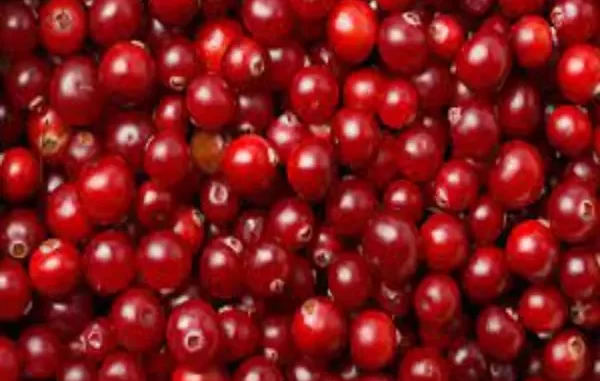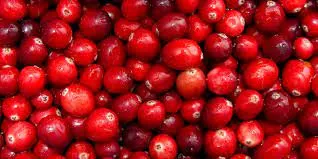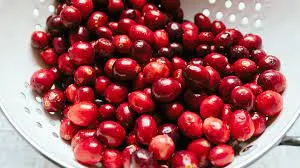
Welcome to the enchanting realm of cranberries! Cranberries stand out as one of the most exceptional and adaptable fruits found on Earth. Whether consumed fresh, cooked, or dried, they are abundant in nutrients and provide a diverse range of health advantages. From combating cancer to aiding digestion, cranberries offer numerous benefits. Additionally, these succulent little fruits are brimming with captivating taste, enhancing their overall appeal! Let’s explore some fun facts about cranberries and why you should add them to your diet.
Discovering the Amazing Health Benefits of Cranberries
Cranberries have gained popularity due to their numerous health benefits. Rich in antioxidants, vitamins, and minerals, cranberries contribute to overall health improvement and maintenance. Scientific research has indicated that cranberries have a positive impact on cardiovascular health, digestion, and even cancer prevention. In terms of cardiovascular health, cranberries contain a compound called proanthocyanidins (PACs).
This compound plays a crucial role in reducing the risk of heart attack and stroke. Studies have demonstrated that PACs help in minimizing the buildup of harmful cholesterol in the arteries, thus preventing blockages that can lead to heart disease and stroke. Regarding digestive health, cranberries are a valuable source of dietary fiber, which is essential for maintaining a healthy digestive system. Dietary fiber aids in the smooth functioning of the digestive tract and facilitates the elimination of toxins from the body.
Additionally, cranberries contain compounds that possess anti-inflammatory properties, which can be beneficial in preventing conditions such as irritable bowel syndrome. Furthermore, cranberries are packed with antioxidants that contribute to cancer prevention. These antioxidants protect the body against damage caused by free radicals, which are known to play a significant role in the development of certain types of cancer.
Moreover, studies have indicated that cranberries can help inhibit the growth of tumors in the body. Overall, incorporating cranberries into one’s diet is highly recommended due to their numerous health benefits. However, it is important to consult with a healthcare professional before adding cranberries to your diet to ensure their safety for you.
Exploring the Fascinating History of Cranberries
The cranberry has a rich and captivating past that has been intertwined with the customs and nourishment of numerous societies throughout time. Originating from North America, it has played a vital role in the diets of indigenous cultures for centuries, and its applications have continued to evolve. The earliest documented use of cranberries can be traced back to the 16th century, when the Wampanoag tribe of Massachusetts harvested cranberries as a food source.

These berries were then dried and stored for future consumption, and the Wampanoag tribes utilized them to create a traditional cranberry sauce. In the 18th century, cranberries were employed as a natural remedy for various ailments, including stomach upsets and colds. This was due to their high concentration of antioxidants, which have beneficial effects on the human body. Commercial cultivation of cranberries began in the 19th century in Massachusetts.
During this time, cranberries were also utilized in the production of jams, jellies, and other preserves. This preservation method gained popularity, and cranberry jelly soon became a staple in many households. By the late 19th century, cranberries had become a prominent commercial crop and were cultivated in numerous regions of North America. Presently, cranberries are grown in various countries worldwide, including the United States, Canada, and Europe.
Throughout history, cranberries have been utilized in diverse ways. They have been used to create fabric dyes and have also been employed for medicinal purposes. In recent times, cranberries have gained increasing popularity as an ingredient in numerous recipes. With a lengthy and captivating history, cranberries have adapted and become cherished in various cultures worldwide.
From being a fundamental component of indigenous tribes’ diets in North America to becoming a sought-after ingredient in contemporary recipes, cranberries have secured a special place in the hearts and palates of many.
How Cranberries Can Improve Your Diet
Cranberries offer numerous health benefits as they are packed with essential nutrients. They are an excellent source of dietary fiber, providing benefits such as improved digestion and reduced risk of constipation. Additionally, cranberries are rich in vitamins C and K, which contribute to a stronger immune system, wound healing, blood clotting, and bone health. These berries also contain vital minerals like potassium, calcium, and magnesium.
Moreover, studies have demonstrated that consuming cranberries can lower the chances of developing chronic diseases like heart disease, type 2 diabetes, and certain cancers. This is due to their high antioxidant content, which helps protect against free radical damage and reduces inflammation in the body.

Furthermore, cranberries have been found to be beneficial for digestive health by fighting harmful bacteria and reducing the risk of urinary tract infections. Including cranberries in your diet, whether fresh, frozen, or dried, can greatly enhance overall health and decrease the likelihood of certain illnesses. They can be incorporated into various dishes such as salads, yogurt, oatmeal, smoothies, and more, providing a nutrient-rich meal option.
Uncovering the Different Varieties of Cranberries
Cranberries have been enjoyed for centuries and are known for their versatility. Native to North America, these tart berries can be used in various culinary dishes and are also used in the production of beverages and supplements. While the large, deep-red variety is the most familiar, there are several other cranberry varieties worth exploring.
The Large Red variety is the most common type of cranberry. It is easily recognizable due to its size, deep red color, and tart flavor. This variety is widely used and can be found in cranberry juice and dried cranberries. The Early Black variety is smaller and rounder than the Large Red cranberries. It has a darker color and a more robust flavor. This variety is often used in sauces and recipes that require a strong cranberry taste.
The Howes variety is the most popular for commercial production. It is larger and more uniform in size compared to the Large Red variety and has a milder flavor. This variety is commonly used in canned cranberry sauces and other processed products. The Stevens variety is smaller than the Howes variety but has a sweeter flavor. It is often used in jams, jellies, pies, and other desserts. Lastly, the Ben Lear variety is the newest cranberry variety. It is smaller in size and has a unique sweet-tart flavor.
This variety is commonly used in juices, sauces, and other products. These are just a few examples of the many cranberry varieties available. Each variety offers its own distinct flavor and texture, making them suitable for a variety of dishes. Regardless of the variety chosen, cranberries are sure to add a unique and delicious flavor to any dish.
Unveiling the Nutritional Value of Cranberries
Cranberries have been widely enjoyed and valued for their nutritional benefits and versatility. This tangy, red fruit has a rich history of culinary and medicinal use, making it a valuable addition to any diet. With low calorie content and a wealth of essential nutrients, cranberries are a nutritious choice. Just one cup of fresh cranberries contains a mere 54 calories, yet it is packed with dietary fiber, vitamin C, vitamin K, and manganese.

Additionally, cranberries are a rich source of antioxidants, such as proanthocyanidins, which have anti-inflammatory properties and can combat free radical damage. One of the notable health benefits of cranberries is their ability to support a healthy urinary tract. The high levels of proanthocyanidins in cranberries help prevent bacteria from adhering to the bladder lining, reducing the risk of urinary tract infections.
Furthermore, cranberries are abundant in polyphenols, a type of antioxidant that offers protection against cancer and cardiovascular disease. The fiber present in cranberries aids in lowering cholesterol levels and reducing the risk of heart disease. In terms of overall nutrition, cranberries are an excellent source of vitamins and minerals that promote overall well-being.
They are particularly beneficial for maintaining a healthy urinary tract and safeguarding against chronic diseases. Incorporating a few servings of cranberries into your weekly diet can provide you with these remarkable health benefits.
Conclusion: Fun Facts About Cranberries
In conclusion, cranberries are a fascinating and versatile fruit with a rich history and promising future. They offer a wide range of vitamins, minerals, and beneficial compounds that support good health. The tart flavor of cranberries adds a unique twist to various recipes, making them a versatile and delicious choice. Whether you’re seeking a healthy snack or a flavorful addition to your dishes, cranberries are an excellent option. If you liked our article Bouncing berries: fun facts about cranberries, you might also like Berry bonanza: interesting facts about strawberries.

Leave a Reply